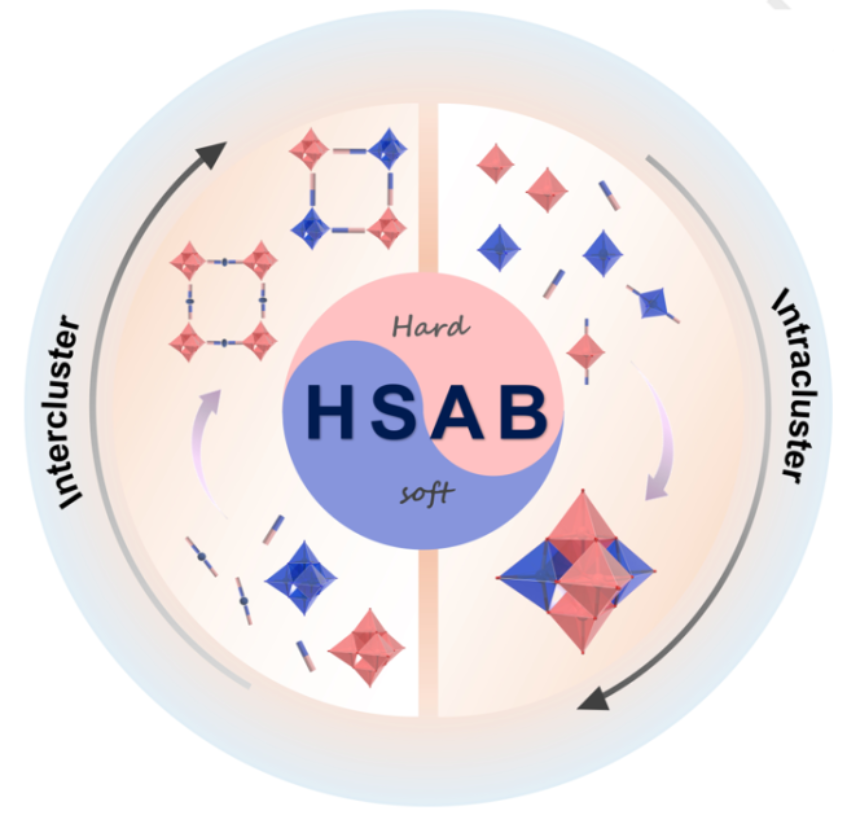Heterometallic doping technology plays a crucial role in materials science, widely applied to achieve structural or performance modifications that single-metal components cannot attain.
In a study published in Angew. Chem. Int. Edit., Prof. FANG Weihui and her colleagues from Fujian Institute of Research on the Structure of Matter, Chinese Academy of Sciences, applied the Hard and Soft Acid-base(HSAB) Theory to construct heterometallic materials with metal-oxo clusters.
The researchers employed the HSAB Theory to explore synthetic strategies for heterometallic materials, highlighting the advantages of this theory in designing and synthesizing discrete heterometallic clusters (intra-cluster assembly) and continuous heterometallic cluster-based materials (inter-cluster assembly). It provides invaluable guidance for a more rational and predictable synthesis process.
The researchers classified synthetic strategies based on HSAB theory, showcasing the diversity of heterometallic materials. They summarized three effective strategies for constructing heterometallic clusters: soft-hard ligand strategy, auxiliary ligand strategy, and metal-ligand strategy. The discussion included the influence of flexible ligands on conformation and their role in the formation of nested and cyclic clusters. Additionally, the importance of controlling the number of metal-oxo clusters and the role of auxiliary ligands in promoting cluster growth were emphasized, providing guidance for constructing larger and more complex structures.
The researchers underscored the significance of guiding theories in heterometallic framework synthesis, pointing out that porous structures offer more possibilities for substance and charge transfer in host-guest chemistry and catalytic reactions. From a design methodology perspective, clusters with regular spatial orientations can serve as secondary building units for potential frameworks, theoretically expandable into frameworks through appropriate linking. Carefully selected secondary building units and linkages can generate frameworks with pre-designed characteristics, reflecting the concept of controllable design synthesis.
Besides, the researchers broadened the application scope of heterometallic cluster-based materials to include catalysis, magnetism, and gas storage and separation. This enhancement increases relevance to a wider audience in the chemical community, showcasing the potential application value of heterometallic materials across multiple fields.
This study aims to advance the development of heterometallic cluster-based materials in a controllable and predictable manner.

Schematic diagram of HSAB theory used in the construction of cluster-based heterometallic materials (Image by Prof. ZHANG’s group).
Contact:
Prof. FANG Weihui
Fujian Institute of Research on the Structure of Matter
Chinese Academy of Sciences
Email: fwh@fjirsm.ac.cn